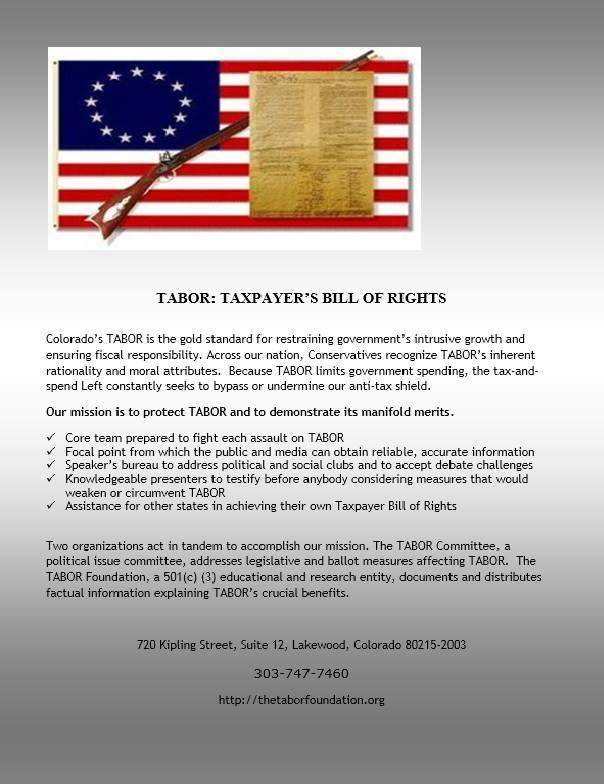 It has been almost 15 years, but hard-working Colorado taxpayers may be in for a TABOR refund in the near future. The combination of an improving economy and tax receipts from the state’s nascent marijuana industry have created a surplus that must be refunded to Colorodans under the state constitution, unless a ballot measure calling for the funds to be retained and spent by the government is passed in a statewide vote.
It has been almost 15 years, but hard-working Colorado taxpayers may be in for a TABOR refund in the near future. The combination of an improving economy and tax receipts from the state’s nascent marijuana industry have created a surplus that must be refunded to Colorodans under the state constitution, unless a ballot measure calling for the funds to be retained and spent by the government is passed in a statewide vote.
Of course, there will be fierce resistance from Democratic lawmakers to refund a penny of the excess tax payments that was dropped into the states’ coffers. It was not too long ago that the Speaker of the Colorado House of Representatives, Dickey Lee Hullinghorst,staked out her position on the issue, saying that “the people would be far better off if we invested that…” and went on to marginalize the refund by comparing it to “50 bucks to spend on a tank of gas or something.”
In case Speaker Hullinghorst has not been part of the middle class for a while, $50 is a lot of money to someone not making six figures.
Hullinghorst’s wild guesstimate of the figure is most likely wrong. According to current estimates, the surplus tax collections will amount to somewhere between $70 million and $220 million during the 2015 fiscal year. This would result in refunds between $15 – $89 per taxpayer, with lower-income people getting more. There is also a possibility that some low earners will get an additional $230, according to a Denver Post story.
We have to ask – are Democrats really representing the middle and lower earners as they claim? If they were, would TABOR refunds even be a question?
As an interesting side note, while TABOR is well-known in Colorado, relatively few states have a similar government spending limit mechanism in their constitutions. The American Legislative Exchange Council (ALEC) actually has a model bill that is based on Colorado’s TABOR amendment that lawmakers in other states can pick up, make minor changes to, and introduce in their own jurisdictions. We would bet there are constituents in many states who would appreciate a cap on their legislature’s wanton spending.



